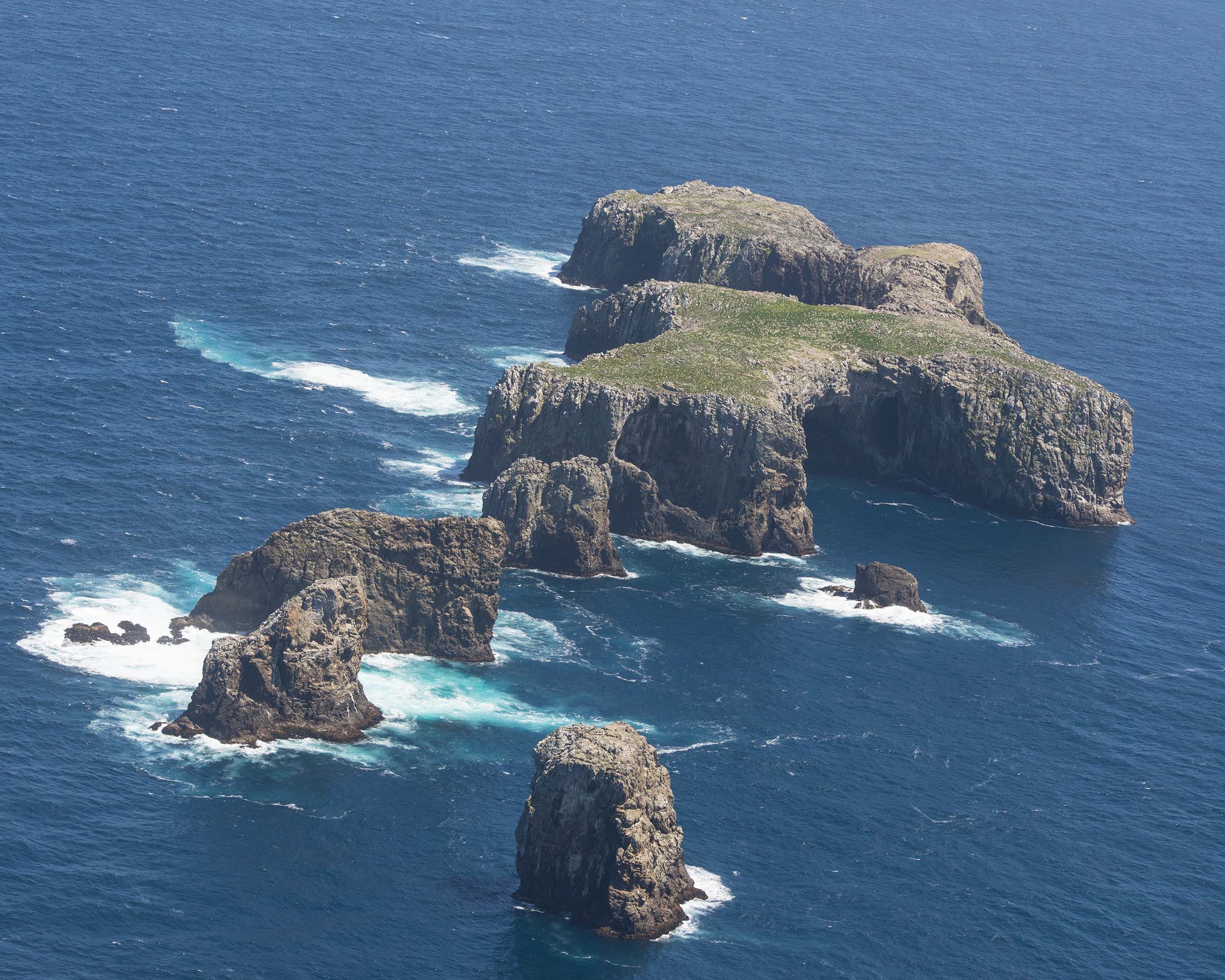
Motuhara from the air, photograph by Barry Baker
Mike Bell (Toroa Consulting Limited) has produced a final report for the New Zealand’s Department of Conservation via its Conservation Services Programme (CSP), describing results obtained from a visit to the island of Motuhara. Three ACAP-listed species were studied, including the globally Endangered Northern Royal Albatross Diomedea sanfordi, that will be featured as part of ACAP marking World Albatross Day on 19 June 2023.
The report’s summary follows:
“Northern Royal Albatross (Diomedea sanfordi), Northern Buller’s Mollymawk (Thalassarche bulleri plateri) and Northern Giant Petrel (Macronectes halli) all have significant breeding populations on Motuhara.
Northern Royal Albatross have been counted on Motuhara using aerial photography from 2006, despite uncertainties in censusing a biennial breeding species, it appears the population is in gradual decline, with the current breeding population at 1,400-1,600 pairs annually. A large number of birds are also found breeding on Rangitatahi/The Sisters, where the average count is between 1,700-2,250 breeding pairs between 2017 and 2022. A small population of 30-40 pairs also breeds at Taiaroa Head, Dunedin.
Northern Buller’s Mollymawk have been counted on Motuhara in 2007, 2008 and 2009, with an average count of 14,699 nests (range 14,185-15,238 nests). A repeat ground census in 2016 recorded 17,682 nests with the increase in numbers considered to reflect improved methodology rather than a true increase. This represents the largest breeding colony of the species, with approximately 3,200 pairs also breeding on The Sisters and a small population of 34 pairs on Rosemary Rock, in the Three Kings Motus (northern North Motu).
The number of Northern Giant Petrels breeding on Motuhara has never been systematically counted, but the breeding population was estimated at 2,000 pairs in 1993. Extrapolating from a census during mid chick rearing in 2016 the population of Motuhara was estimated at 1,935 breeding pairs, making Motuhara the largest colony of this species in New Zealand; and the second largest colony globally behind South Georgia.
In January 2021 a field trip to Motuhara was carried out to undertake seabird research. During which GLS devices were deployed on Buller’s Mollymawk, and cameras were set up to record breeding activity at Royal Albatross, Buller’s Mollymawk, and Giant Petrel breeding areas. As it is required to recover devices to obtain the data further trips to the motu were planned in August 2021, and January 2022. Unfortunately, due to the August 2021 Covid-19 lockdown a trip was not possible in August, but one was carried out in January 2022. This report summarises the results of this field trip and summarises research undertaken on Northern Buller’s Mollymawk, Northern Royal Albatross and Northern Giant Petrel; including recovering GLS tracking devices on birds and data from cameras established at colonies.
Reference:
Bell, M.[D.] 2022. Motuhara Seabird Research: Field Trip Report January 2022. [Blenheim: Toroa Consulting Limited]. 12 pp.
John Cooper, ACAP News Correspondent, 29 December 2021

 English
English  Français
Français  Español
Español